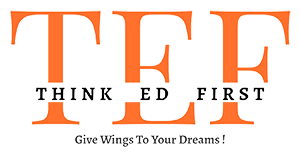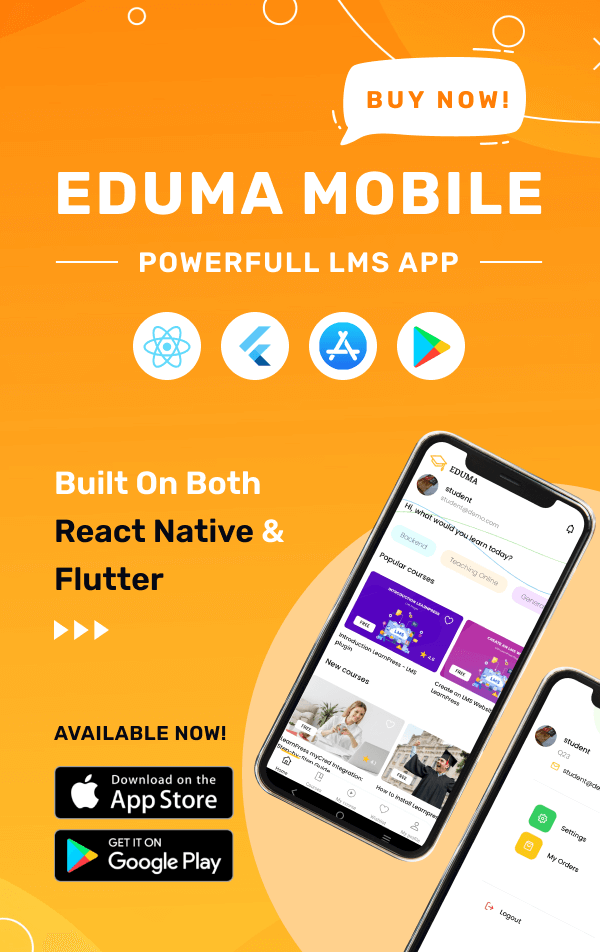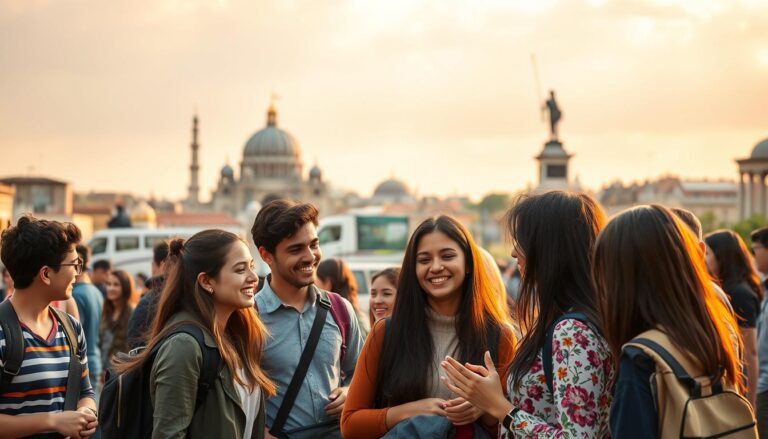Choosing the right path for a medical degree is a critical decision for Indian students. With increasing competition and rising expenses at home, many are exploring international options. One such destination gaining attention offers modern infrastructure and globally recognized qualifications.
Why are more students considering studying abroad? The answer lies in affordability and quality. International institutions provide advanced teaching methodologies and state-of-the-art facilities. These factors make them an attractive alternative to the highly competitive and expensive options in India.
In this article, we’ll explore the benefits and challenges of pursuing a medical degree abroad. We’ll also compare the costs and opportunities to help you make an informed decision. Stay tuned for a detailed analysis!
Overview of MBBS in Russia vs. India
The global medical education landscape is evolving rapidly, offering students diverse opportunities. With increasing competition and limited seats in domestic institutions, many Indian students are exploring international options. This shift is driven by the desire for quality education, modern facilities, and global recognition.
State medical universities in Russia are gaining popularity among aspiring doctors. These institutions are known for their modern curricula, advanced teaching methods, and affordable fees. The emphasis on English-medium instruction in top Russian universities makes them accessible to international students.
Here are some key factors driving this trend:
- Affordable tuition fees compared to private institutions in India.
- Globally recognized degrees that open doors to international practice.
- Modern infrastructure and competent faculty ensuring a high-quality education.
- Increased opportunities for clinical exposure and professional growth.
Current trends show a growing preference for studying abroad. The focus on English-medium programs and the availability of scholarships further enhance this appeal. As more students explore these options, the global medical education system continues to evolve, offering promising opportunities for aspiring doctors.
Understanding MBBS cost Russia vs India
Understanding the financial aspects of medical education is essential for aspiring doctors. For international students, the decision to study abroad involves evaluating tuition fees, living expenses, and hidden costs. This section provides a detailed cost breakdown to help you make an informed choice.
Tuition Fees and Living Expenses Analysis
Tuition fees vary significantly between countries. In Russia, the annual tuition fee ranges from ₹2.5 lakhs to ₹6 lakhs. These fees often include hostel accommodation, food, and health insurance, making it a cost-effective option.
In contrast, private institutions in India charge substantially higher fees, often exceeding ₹50 lakhs for the entire course. Government colleges are more affordable but highly competitive. Living expenses in Russia are also lower, averaging around €195 per month, compared to the higher costs in Indian cities.
Comparison of Hidden Costs
Hidden costs can impact your budget. In Russia, most universities offer transparent fee structures, with minimal additional expenses. However, students should account for visa fees, travel, and personal expenses.
In India, hidden costs include donation fees in private colleges, high hostel charges, and additional exam fees. These expenses can add up, making the overall cost much higher than anticipated.
| Expense | Russia (Annual) | India (Annual) |
|---|---|---|
| Tuition Fee | ₹2.5 – ₹6 lakhs | ₹5 – ₹20 lakhs |
| Hostel Charges | Included | ₹1 – ₹2 lakhs |
| Living Expenses | ₹1.5 – ₹2 lakhs | ₹2 – ₹3 lakhs |
| Hidden Costs | Minimal | ₹1 – ₹5 lakhs |
When considering the duration of the course, Russia’s 6-year program includes an internship, while India’s 5.5-year course follows a similar structure. The longer duration in Russia provides additional clinical exposure, enhancing your practical skills.
For international students, understanding these costs is crucial. By comparing tuition fees, living expenses, and hidden costs, you can make a well-informed decision about your medical education journey.
Advantages of Pursuing MBBS in Russia
Pursuing a medical degree abroad offers unique opportunities for aspiring doctors. Russian medical universities are known for their state-of-the-art infrastructure and globally recognized programs. These institutions provide an excellent learning environment for students aiming to excel in the medical field.
Modern Infrastructure and Competent Faculty
Russian medical universities boast modern facilities, including advanced laboratories and simulation centers. These resources enhance the learning experience, allowing students to gain practical skills. The low student-teacher ratio ensures personalized attention, fostering academic growth.
Competent faculty members guide students through rigorous training programs. Their expertise and dedication contribute to a high-quality education. This combination of modern infrastructure and skilled educators creates an ideal environment for medical training.
Accreditation and Global Recognition
Degrees from Russian medical universities are accredited by international organizations like WHO, NMC, and ECFMG. This global recognition ensures graduates can practice medicine worldwide. Institutions such as Kazan State Medical University and Pavlov University are renowned for their accredited programs.
Federal universities in Russia play a significant role in the country’s healthcare system. Their contributions to medical education and research are widely acknowledged. These advantages make Russian institutions a top choice for students seeking a globally recognized degree.
- Modern infrastructure and advanced labs create an excellent learning environment.
- Competent faculty and low student-teacher ratios ensure personalized education.
- Multiple accreditations guarantee global recognition of medical degrees.
- Top federal universities contribute to a robust healthcare system.
Benefits of Studying MBBS in India
Studying medicine in India offers unique advantages that shape well-rounded medical professionals. The country’s diverse healthcare landscape provides students with unparalleled clinical exposure and hands-on training. This experience is invaluable for aspiring doctors aiming to excel in their careers.
Diverse Clinical Exposure
Indian medical colleges are known for their extensive clinical training. Students interact with a wide range of patients, from urban to rural settings. This diversity prepares them to handle complex cases and adapt to various healthcare environments.
Hospitals affiliated with these colleges see a high volume of patients daily. This ensures students gain practical experience in diagnosing and treating a variety of conditions. Such exposure is critical for developing clinical skills and confidence.
Competitive Environment and Academic Rigor
The competitive nature of medical education in India drives students to excel. With limited seats in government colleges, students are motivated to perform their best. This environment fosters discipline, resilience, and a strong work ethic.
Indian medical curricula are rigorous, combining theoretical knowledge with practical application. This balance ensures graduates are well-prepared for both exams and real-world medical challenges.
Cultural Familiarity and Language Advantage
Studying in India allows students to work in a familiar cultural and linguistic setting. This enhances patient interactions, as students can communicate effectively with local populations. It also builds trust and rapport, which are essential in healthcare.
For those considering international options, Studying MBBS in Russia offers its own set of benefits. However, the cultural and clinical advantages of studying in India remain unmatched.
In summary, India’s medical education system provides a robust foundation for aspiring doctors. The combination of diverse clinical exposure, academic rigor, and cultural familiarity makes it a compelling choice for many students.
Eligibility Criteria and Admission Process
Navigating the admission process for medical studies requires careful attention to eligibility criteria. For Indian students, understanding the requirements is the first step toward securing a seat in a reputable institution. This section outlines the academic prerequisites, NEET mandate, and essential documents needed for admission and visa processing.
Academic Requirements and NEET Mandate
To qualify for medical studies, students must have completed their 12th standard with Physics, Chemistry, and Biology as main subjects. A minimum of 50% aggregate marks in these subjects is mandatory. This ensures a strong foundation for the rigorous curriculum ahead.
Passing the NEET test is a non-negotiable requirement for Indian students. This standardized exam evaluates your readiness for medical studies and is essential for both domestic and international admissions. Without a valid NEET score, applications will not be considered.
Document and Visa Essentials
The admission process involves submitting several key documents. These include attested mark sheets, your NEET scorecard, a valid passport, and a medical certificate. These documents verify your eligibility and ensure a smooth application process.
For international institutions, the visa process typically takes 3-4 weeks. Students must provide an admission letter, proof of financial stability, and a completed visa application form. This streamlined process reduces the stress often associated with entrance exams and donations.
By meeting these criteria and preparing the necessary documents, you can confidently navigate the admission process. This ensures a seamless transition into your medical studies and sets the stage for a successful internship and career.
Detailed Cost Breakdown: Tuition, Hostel, and Living Expenses
Accurate financial planning is key for students aiming to study medicine abroad. Understanding the full scope of expenses ensures they can make informed decisions. This section provides a detailed cost breakdown, covering tuition, hostel fees, and living expenses.
Cost Structure at Top Russian Medical Universities
Top Russian medical universities offer affordable tuition fees compared to private institutions in India. For example, Bashkir State Medical University charges approximately ₹5.8 lakhs annually, while Crimea Federal University’s fees are around ₹4 lakhs per year. Hostel fees are often included, reducing additional costs.
Living expenses in Russia are budget-friendly, averaging ₹12,000 to ₹21,000 per month. This includes food, transport, and personal expenses. Students should also account for visa fees and medical insurance, which are minimal but essential.
Indian Medical College Expense Overview
In India, private medical colleges charge significantly higher fees, often exceeding ₹20 lakhs annually. Government colleges are more affordable but highly competitive. Hostel fees and living expenses vary widely, depending on the city and institution.
Hidden costs in India include donation fees, additional exam charges, and high hostel fees. These expenses can add up, making the overall cost much higher than anticipated.
- Tuition fees at top Russian universities range from ₹2.5 to ₹6 lakhs annually.
- Hostel fees are often included, with minimal additional costs.
- Living expenses in Russia average ₹12,000 to ₹21,000 per month.
- Private Indian colleges charge ₹20 lakhs or more annually.
- Hidden costs in India include donations and additional exam fees.
For students seeking affordable options, studying medicine abroad can be a viable choice. By comparing these costs, students can plan their finances effectively and focus on their education.
Comparing MBBS Course Duration and Curriculum
The structure and duration of medical programs vary significantly across countries, impacting students’ learning experiences. Understanding these differences helps aspiring doctors choose the right path for their education and career.
In Russia, the medical program typically spans six years, including a one-year internship. This extended duration allows students to gain comprehensive clinical exposure. The curriculum is divided into theoretical and practical phases, ensuring a balanced approach to medical education.
In contrast, the program in India lasts 5.5 years, also including a one-year internship. The curriculum is structured to provide a strong foundation in medical sciences, followed by advanced clinical training. Both systems emphasize hands-on experience, but the approach differs slightly.
Theoretical Years vs. Clinical Training
In Russia, the first two years focus on foundational subjects like anatomy, physiology, and biochemistry. The next four years are dedicated to clinical training, where students work directly with patients under supervision. This extended clinical phase enhances practical skills and prepares students for real-world challenges.
In India, the first 1.5 years cover basic medical sciences, followed by 1.5 years of para-clinical subjects. The final 2.5 years are devoted to clinical rotations, providing students with diverse patient interactions. This structure ensures a gradual transition from theory to practice.
Learning the local language is crucial for clinical training in Russia. While the program is taught in English, interacting with patients often requires knowledge of Russian. This additional skill enriches the learning experience and improves patient communication.
| Aspect | Russia | India |
|---|---|---|
| Total Duration | 6 years | 5.5 years |
| Theoretical Phase | 2 years | 1.5 years |
| Clinical Phase | 4 years | 4 years |
| Internship | 1 year (included) | 1 year (included) |
Structured internship programs in both countries provide valuable practical experience. These internships are designed to bridge the gap between academic learning and professional practice, ensuring graduates are career-ready.
By understanding these differences, students can make informed decisions about where to pursue their medical education. The choice ultimately depends on their career goals and preferred learning environment.
Language and Cultural Considerations
Adapting to a new language and culture is a key part of studying abroad. For students in Russian medical universities, this involves balancing English-medium instruction with learning the local language. This dual approach enhances both academic success and patient care.
English-Medium Instruction
Many top Russian medical universities offer programs in English, making them accessible to international students. Institutions like Bashkir State Medical University provide courses tailored for non-Russian speakers. This ensures students can focus on their studies without language barriers.
English-medium programs align with global standards, preparing students for international practice. They also cover essential topics required for exams like the FMGE, which is crucial for Indian students returning home.
Benefits of Learning Russian
While English programs are available, learning Russian offers significant advantages. It improves communication with patients during clinical rotations, enhancing practical skills. Basic language skills also help students navigate daily life and integrate into the local culture.
Cultural differences enrich the learning experience. Understanding local customs and traditions fosters better patient relationships and broadens perspectives. This cultural immersion is invaluable for aspiring doctors.
Tips for Cultural Adaptation
- Enroll in Russian language classes to build foundational skills.
- Engage with local communities to understand cultural nuances.
- Participate in university events to connect with peers and faculty.
- Practice patience and openness when facing cultural differences.
| Aspect | English-Medium Programs | Russian-Medium Programs |
|---|---|---|
| Language of Instruction | English | Russian |
| Clinical Interaction | Limited without Russian skills | Enhanced with local language |
| Cultural Integration | Moderate | High |
| Global Recognition | High | Strong locally |
Choosing the right program depends on your goals. English-medium programs offer global recognition, while Russian-medium options provide deeper cultural integration. Both paths prepare students for successful careers in medicine.
State Medical Universities and Institutional Choices
Selecting the right university is a pivotal step for students aiming to excel in the medical field. State medical universities in Russia offer a blend of quality education, modern infrastructure, and global recognition. These institutions are ideal for students seeking a comprehensive learning experience.
State and federal universities in Russia are known for their advanced curricula and affordable tuition. They provide a supportive environment for international students, with English-medium programs and diverse cultural exposure. Choosing the right institution depends on several factors, including accreditation, infrastructure, and global rankings.
Top Russian Medical Universities and Federal Institutions
Russia is home to several prestigious medical universities. Kazan Federal Medical University and Pavlov University are among the top choices for students. These institutions are recognized for their state-of-the-art facilities and globally accredited programs.
When selecting a university, consider its global rankings and affiliations. Accredited institutions ensure that your degree is recognized worldwide. Additionally, modern infrastructure and experienced faculty enhance the learning experience.
| University | Accreditation | Global Ranking | Infrastructure |
|---|---|---|---|
| Kazan Federal Medical University | WHO, NMC | Top 500 | Advanced labs, simulation centers |
| Pavlov University | ECFMG, NMC | Top 600 | Modern classrooms, research facilities |
| Bashkir State Medical University | WHO, NMC | Top 700 | Comprehensive libraries, clinical training centers |
Choosing the right university involves evaluating your academic and career goals. Consider factors like program structure, clinical exposure, and international recognition. By making an informed decision, you can set the foundation for a successful medical career.
Accreditation and Recognition Factors
Ensuring the validity and global acceptance of a medical degree is a top priority for students. Accreditation by recognized bodies guarantees that the education meets international standards. This not only enhances career prospects but also ensures eligibility for licensing exams worldwide.
NMC, WHO, and International Approval
Accreditation by the National Medical Commission (NMC) and the World Health Organization (WHO) is crucial for Indian students. These approvals ensure that the degree is recognized globally, allowing graduates to practice medicine in multiple countries. For example, the globally recognized MBBS program at Perm State Medical University is accredited by both NMC and WHO.
Recognition by bodies like FAIMER and ECFMG further enhances career opportunities. Graduates from accredited institutions can pursue residency and practice in countries like the USA and UK. This global recognition is essential for students aiming for international careers.
- Choosing NMC-approved institutions ensures eligibility for the FMGE exam in India.
- WHO accreditation guarantees global recognition and career flexibility.
- FAIMER and ECFMG approvals open doors to postgraduate opportunities abroad.
Accredited degrees also support further specialization. Graduates can pursue advanced studies and certifications, enhancing their expertise and career growth. This makes accreditation a critical factor in selecting a medical university.
| University | Accreditation | Global Ranking |
|---|---|---|
| Kazan Federal Medical University | NMC, WHO | Top 500 |
| Pavlov University | ECFMG, NMC | Top 600 |
| Bashkir State Medical University | WHO, NMC | Top 700 |
By choosing accredited institutions, students can ensure their degrees are respected globally. This not only enhances career prospects but also provides a solid foundation for professional growth.
Scholarships, Financial Aid, and Financing Options
Scholarships and financial aid can make international education more accessible. For students pursuing medical studies, understanding the available support is essential. This section outlines various opportunities to help you manage tuition and living expenses effectively.
Available Financial Support and Loan Options
Many medical universities in Russia offer scholarships to international students. These include merit-based awards for academic excellence and need-based aid for those requiring financial assistance. For example, Kazan Federal University provides scholarships covering up to 100% of tuition fees for outstanding students.
Government scholarships, such as those from the Russian Ministry of Education, are also available. These often include tuition waivers, accommodation, and a monthly stipend. Additionally, NGOs like the Scholarship Foundation of India offer financial aid specifically for students studying abroad.
Loan options are another viable solution. Banks and financial institutions provide education loans tailored for international studies. These loans cover tuition, living expenses, and other costs, making it easier to manage finances while pursuing your degree.
Comparing Financing Options
Financing options vary between studying in Russia and India. In Russia, scholarships and government aid significantly reduce the overall cost. For instance, the Open Doors Russian Scholarship Project offers full tuition coverage for competitive programs.
In India, private medical colleges often lack such financial support, leading to higher out-of-pocket expenses. Government colleges are more affordable but highly competitive. Understanding these differences helps students make informed decisions.
| Type of Support | Russia | India |
|---|---|---|
| Merit-Based Scholarships | Available (up to 100% tuition) | Limited |
| Need-Based Aid | Available | Rare |
| Government Scholarships | Yes (tuition, accommodation, stipend) | Limited to government colleges |
| Education Loans | Available | Available |
Budgeting Tips for Prospective Students
Effective budgeting is key to managing expenses while studying abroad. Start by estimating tuition, accommodation, and living costs. Look for scholarships and financial aid to reduce these expenses.
Consider part-time work opportunities if your visa permits. This can help cover personal expenses. Lastly, track your spending to ensure you stay within your budget. Affordable education in Russia is achievable with careful planning and the right financial support.
Student Life and Campus Facilities
Student life plays a vital role in shaping a well-rounded educational experience. For those pursuing a degree in medicine, modern campus facilities and a vibrant social scene are essential. These elements not only support academic success but also foster personal growth and cultural integration.
Modern Hostels and On-Campus Amenities
Many universities offer state-of-the-art hostel facilities designed for comfort and safety. These accommodations often include shared rooms, study areas, and recreational spaces. On-campus amenities such as libraries, sports complexes, and cafeterias provide students with everything they need for a balanced lifestyle.
For international students, cafeterias often serve diverse cuisines, including Indian food. This ensures students feel at home while exploring new cultures. The availability of these amenities makes campus life convenient and enjoyable.
Cultural Integration and Social Opportunities
Cultural exchange is a significant part of student life. Universities organize events, festivals, and workshops that encourage interaction among students from different backgrounds. These activities help build lasting friendships and broaden perspectives.
Extracurricular activities such as sports, music, and clubs provide opportunities for students to pursue their interests outside the classroom. This balance between academics and personal interests is crucial for a fulfilling educational journey.
- Modern hostels ensure safety and comfort for students.
- On-campus amenities like libraries and sports facilities enhance daily life.
- Cultural events and social activities foster integration and friendships.
- Extracurricular opportunities support personal growth and well-being.
For those considering affordable education options, the vibrant student life and modern facilities make it an attractive choice. A balanced campus experience ensures students thrive both academically and personally.
Career Prospects After MBBS
Completing a medical degree opens doors to a wide range of career opportunities globally. Graduates from accredited institutions find themselves well-prepared for diverse roles in healthcare, research, and academia. Whether you aim to practice medicine, specialize further, or contribute to medical research, the possibilities are vast.
Postgraduate Options and Professional Growth
After earning your degree, postgraduate studies are a common next step. Specializations such as General Medicine, Surgery, and Pediatrics allow you to focus on specific areas of interest. Many graduates also pursue master’s or doctoral programs to enhance their expertise and career prospects.
Teaching and research are other rewarding paths. Universities and research institutions often seek qualified professionals to contribute to medical advancements. These roles not only offer intellectual fulfillment but also help shape the future of healthcare.
Global Career Outlook and Job Opportunities
Graduates from accredited programs are eligible to practice medicine in multiple countries. Clearing exams like the FMGE in India or the USMLE in the USA opens doors to lucrative opportunities. The average salary for medical professionals ranges from 8,000 to 10,000 USD annually, depending on the location and specialization.
Healthcare management and international organizations like WHO also offer promising career paths. These roles focus on public health, policy-making, and disease prevention, providing a broader impact on global health.
| Career Path | Opportunities | Average Salary (INR) |
|---|---|---|
| Clinical Practice | General Physician, Specialized Doctor | 6-10 Lakhs |
| Research | Pharmaceutical Research, Clinical Trials | 5-8 Lakhs |
| Healthcare Management | Hospital Administration, Public Health | 7-12 Lakhs |
| Academia | Medical Professor, Research Academics | 6-9 Lakhs |
By choosing to study in Russia, you gain access to globally recognized programs that prepare you for these opportunities. The combination of quality education and diverse career paths makes it a compelling choice for aspiring medical professionals.
Comparison of MBBS Costs: Russia vs. India
Evaluating the long-term benefits of a medical degree is essential for students planning their future careers. When choosing between studying in Russia or India, it’s important to consider not just the immediate costs but also the value and opportunities each option offers over time.
For those pursuing a medical degree, affordability and quality are key factors. Russian institutions provide a cost-effective solution with lower tuition and living expenses. This makes it an attractive choice for students seeking quality education without financial strain.

Long-Term Financial Benefits
One of the main advantages of studying in Russia is the lower overall investment. Tuition fees are significantly lower compared to private medical colleges in India. Additionally, living expenses in Russia are budget-friendly, allowing students to focus on their studies without financial stress.
In contrast, studying in India often involves higher costs, especially in private institutions. While government colleges are more affordable, they are highly competitive. The financial burden in India can be substantial, making Russia a more viable option for many students.
Career Prospects and Global Mobility
Graduates from Russian medical colleges benefit from globally recognized degrees. This opens doors to international practice and further specialization. The emphasis on clinical training and modern infrastructure ensures students are well-prepared for their careers.
In India, the robust clinical exposure and familiarity with the healthcare system provide a strong foundation. However, the higher costs and limited seats in government colleges can be a challenge. Students must weigh these factors when deciding where to pursue their education.
| Aspect | Russia | India |
|---|---|---|
| Tuition Fees (Annual) | ₹2.5 – ₹6 lakhs | ₹5 – ₹20 lakhs |
| Living Expenses (Annual) | ₹1.5 – ₹2 lakhs | ₹2 – ₹3 lakhs |
| Global Recognition | High | Strong locally |
| Clinical Exposure | Comprehensive | Extensive |
Ultimately, the choice between studying in Russia or India depends on individual preferences and financial circumstances. Both options offer unique advantages, and students should carefully evaluate their goals before making a decision.
Conclusion
Deciding where to pursue your medical education is a pivotal step toward building a successful career. Both options—studying in a russian university or at home—offer distinct advantages. Institutions like bashkir state medical provide globally recognized degrees, ensuring eligibility for practice in multiple countries.
One key consideration is the balance between affordability and quality. While international programs offer lower fees and modern infrastructure, domestic education provides extensive clinical exposure and cultural familiarity. Each option has its merits, depending on your career goals and financial situation.
We encourage prospective students to evaluate their aspirations carefully. Whether you prioritize global recognition or local relevance, choosing the right institution is crucial. For personalized guidance, reach out to experts who can help you make an informed decision.




